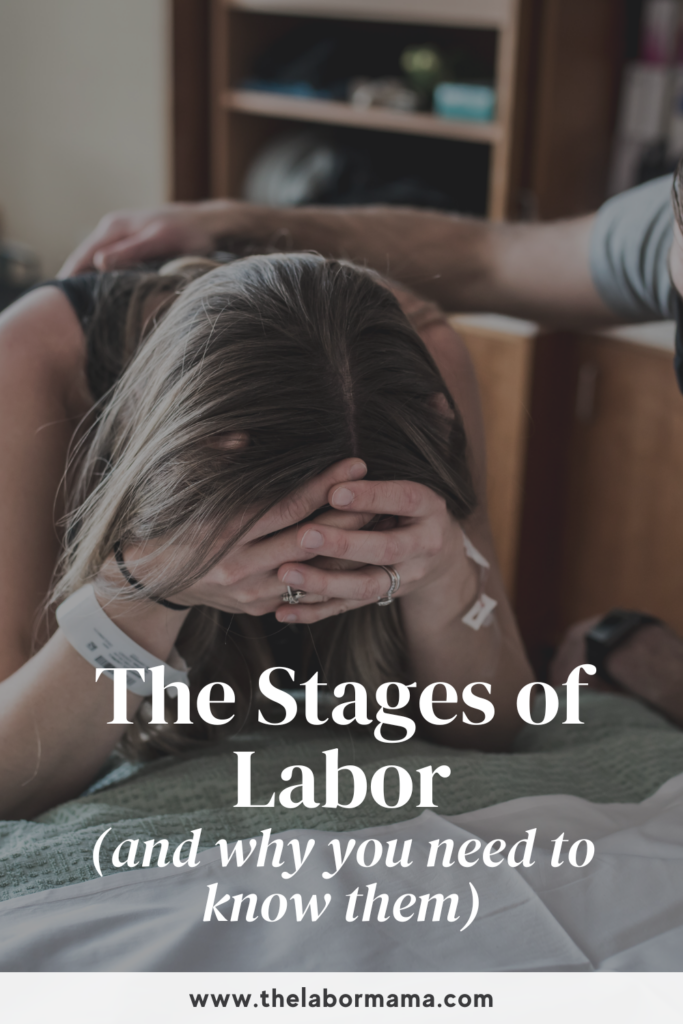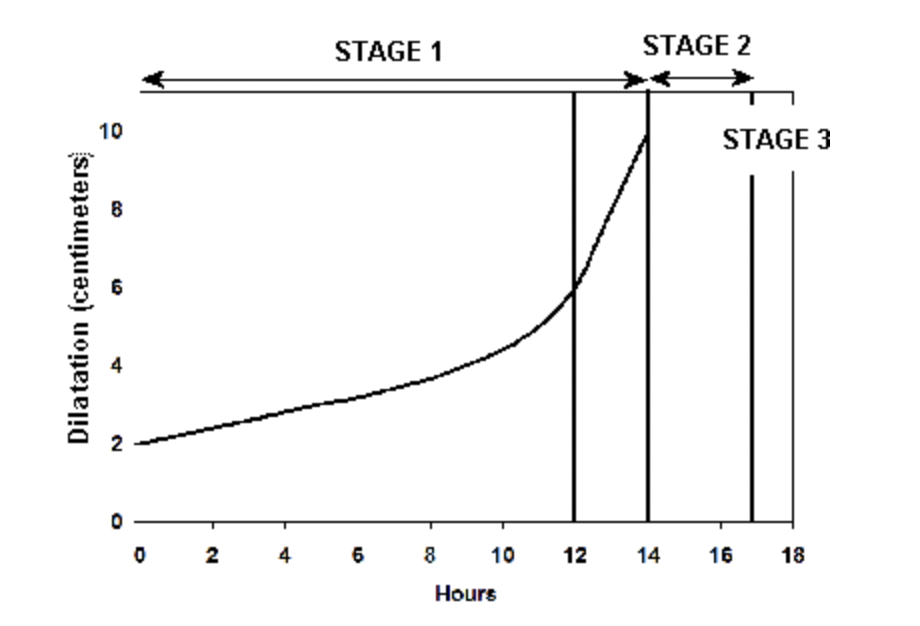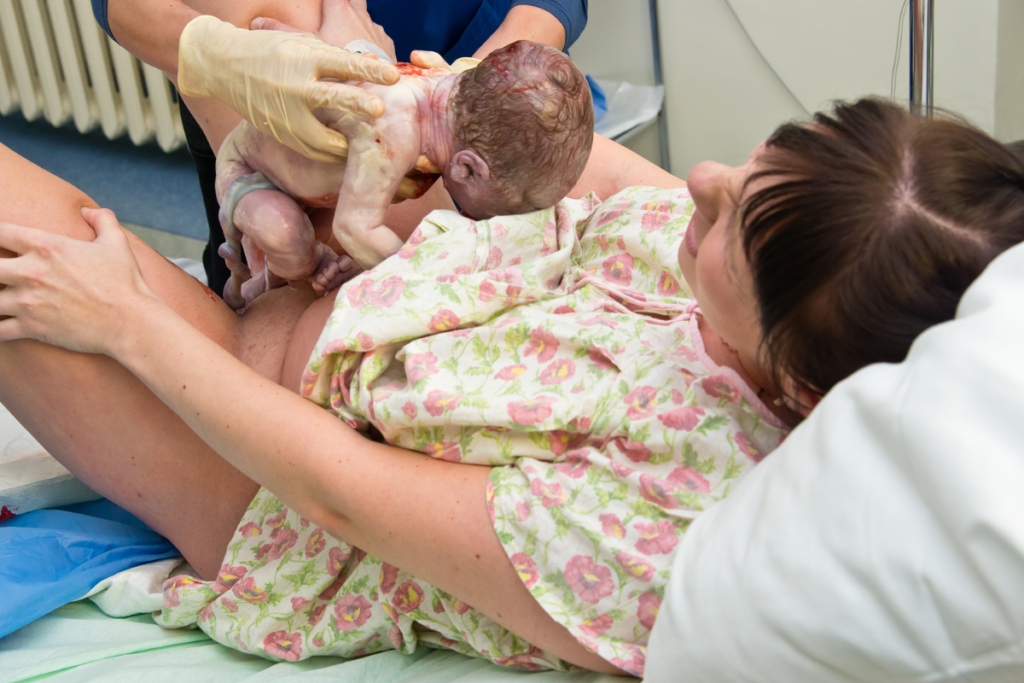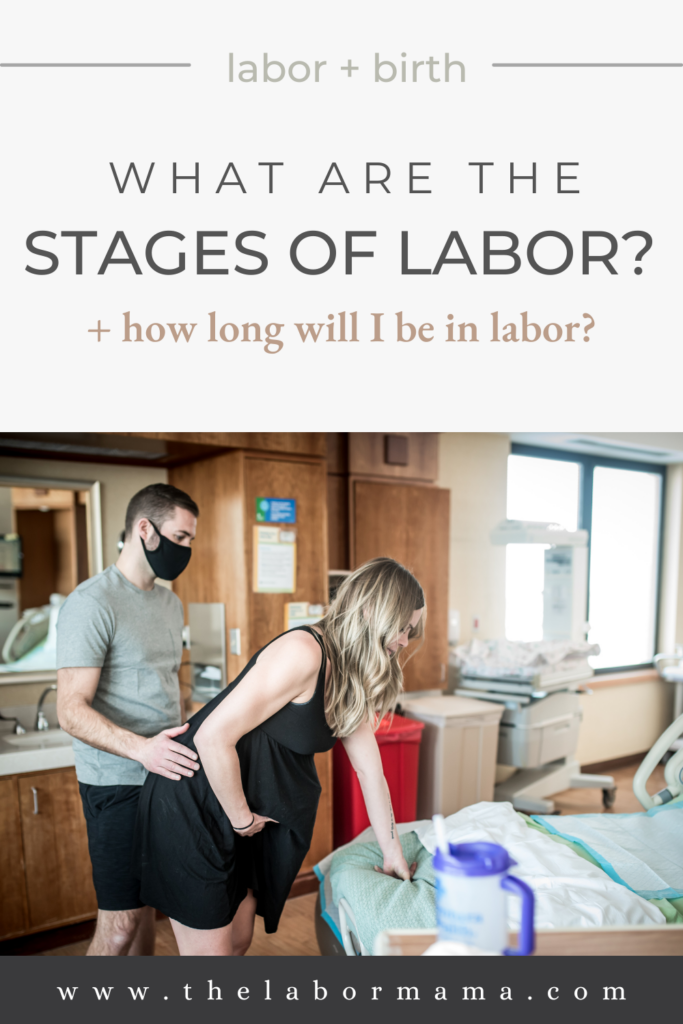Did you know that labor and birth has multiple stages and phases? Have you heard this? Does it matter? Do you need to know more? I think you do. Why? Because one of the most common questions pregnant mamas ask me is: “how long am I going to be in labor?” But I think understanding the answer to this question really starts with understanding all of the stages and phases of labor.
But before we dive into the stages of labor – Who is The Labor Mama and Why Am I Here?
Hey friend! I’m Lo – also known around here and social media as The Labor Mama. I’ve spent my nursing career in labor, delivery, and postpartum, have birthed 4 of my own babies, have labored thousands of mamas at the bedside, have taught thousands of students online, and have even delivered a few speedy little babies with my bare hands (oops).
Here at TLM, I offer online classes about birth, postpartum, newborn care, and breastfeeding to empower you the way everyone should be. The education + support I offer gives you experience, evidence, and empathy; you’re getting all of my years of “clinical” RN knowledge, honestly combined with my real experiences as a mama, nurse, and CLC. These are not your average hospital classes (those won’t do it, I promise), and honestly, birth, postpartum, and breastfeeding don’t follow a textbook or protocol anyway. You need to know so much more than that!
If you want to connect with me further, head to Instagram. There are hundreds of thousands of us over there learning together daily.
A note: This post may include affiliate links. This means if you make a purchase after clicking a link, I will earn a small commission (thank you)! Rest assured, this comes at no additional cost to you. You can read TLM’s full disclosure here.

What are the stages of labor?
You may have noticed that I just talked about stages and phases of labor. Good catch – and yes, it’s important. I’m going to give you a quick overview of all of it here, and then we’ll go into more detail about each stage of labor.

- The First Stage: The first stage of labor is the time you spend from first contraction until 10 centimeters dilation. This is usually the longest stage for all of us. This stage is also sub-divided into three additional phases: early or latent labor, active labor, and transition.
- The Second Stage: The second stage of labor is the time from 10 centimeters dilation until delivery of the baby. You’ll spend some, if not all, of this time pushing! This can be minutes or hours.
- The Third Stage: The third stage of labor is the time from delivery of your baby until the delivery of the placenta.
- The Fourth Stage: Ok, technically, the fourth stage isn’t always defined clinically. But, it is commonly understood that the fourth stage of labor is the first 1-2 hours after birth. Ideally, your uterus is toning back up and shrinking while you are being monitored by your RN.
How long will I be in the stages of labor?
Let’s briefly talk about general timelines. I know, everyone wants to know “how long will I be in labor?” So did I! But guess what? The answer to that question, like so many other questions, is “it depends.” For a long time, the OB world subscribed to the idea that you should dilate 1 centimeter every hour of labor. This idea came from something called Friedman’s Curve, but it has not been held to for quite some time.

Today, there is not such a hard and fast rule about rate of dilation. And I am so glad, as I have seen many totally normal births move much slower than Friedman’s Curve! I can tell you that it is widely accepted that first time birthers usually can have a longer labor process, averaging somewhere between 12-24 hours (or more). It is not uncommon for repeat birthers to deliver much quicker, with an average length of labor closer to 8-10 hours.
I think the best thing you can do right now is to prepare yourself for the longer labor. If your labor is shorter, that is great! But I teach in a way that prepares you to really run the full marathon. And then you are just sweetly surprised if it is over sooner.
Want some tips to shorten your labor? Check this out.
The first stage of labor
Alright, let’s talk about the first stage in a little more detail. As I mentioned briefly, the first stage of labor is made up of three phases: early labor, active labor, and transition. Though some move through the stages of labor quickly, it is often true that overall, most will spend the most amount of time in the first stage of labor. Ok, know let’s chat about the three phases of the first stage of labor.
What is the early phase of labor?
So, what’s early labor? Clinically, this is often classified as the time spent from 0-6 centimeters (or from whatever dilation you start from when your actual labor process begins). Early labor can be hours or days – it’s really impossible to say exactly how long this stage may be. Typically, you’ll spend the most time in this phase. This is also the phase in which the cervix dilates the slowest.
During early labor your body begins to establish a regular contraction pattern. You may find that your contractions are more mild and/or easier to handle, but that they slowly progress in strength. It is also possible that your contraction pattern starts pretty spread out (perhaps a contraction every 15-20 minutes or so), and then slowly begins to get closer and closer together. Of course, some hit early labor with contractions 60 seconds long and 5 minutes apart right from the start, so there is no way to tell you exactly how it will look.
You may note some bloody show during early labor. This is more likely if you have been laboring for a while or if your contraction pattern has progressed closer together and increased in strength. This is totally normal, as long as there is not heavy, bright red bleeding occurring.
Most are free to spend this part of their labor process in their homes – and I highly encourage you to do that! You can give your provider a call and a heads up, but there is rarely a reason to rush to the hospital when you’re in early labor, and if you do, you may actually get sent back home!
What is the active phase of labor?
The second phase of the first stage of labor is active labor. This is the time spent from 6 centimeters until about 8 centimeters (or until transition). By the time I was in active labor with all 3 of my children, I knew it and I was hurting. If you aren’t at the hospital yet, there is a very good chance that once you hit active labor, you will be feeling like you need to go!
By the time you are in active labor, you are likely no longer able to chat through your contractions. They are probably regular, pretty close together, and strong. You are probably going to be a lot more focused on what you are feeling, your breathing, and the tools you have been considering to manage your pain. It is not uncommon to throw up, have some shakes, and see an increase in some bloody show.
How long active labor is really depends on the person. It can be hours or it can be minutes, but typically, it is much shorter than early labor and the cervix dilates quicker. Both as the mama and as a nurse, I often felt like a fast moving active labor stage kind of ran straight into the transition phases. That can make it hard to clarify exactly when one moves from the 2nd phase to the 3rd phase.
What is the transition phase of labor?
Ok, transition is the last phase of the first stage of labor. As a RN, transition is my favorite part of the first stage. Why? Because it means that you are SO close! I love encouraging patients in this phase, particularly as they start to doubt that they can do it. But as the delivering mama? I hate transition. It is painful and it is intense. For me, it is the moment every time where I start to cry, certain that I can no longer do it.
Typically, it is during transition that you really need your RN, your support people, your partner, and/or your doula. It is not uncommon to feel that no position is working for pain. It can be easy to lose sight of healthy breathing patterns. If you are attempting unmedicated birth, these are often the contractions when you start begging for an epidural, when you no longer care about your goals, when you simply want it all to stop. If you haven’t vomited yet, it may start, as well as the shakes, going hot and cold, your water breaking. For many, it just feels like no matter what you do, you are not okay.
The good news here? Transition is typically short! Some spend only a few minutes in this stage (thank goodness, right?). Overall it is rarely longer than an hour or two.
FUN FACT: The phases of the first stage of labor often coincide with specific emotions. These are called the emotional signposts of labor. Knowing these can help you know your labor is progressing – without your cervix being checked. Read all about them here.
What is the second stage of labor?
Once you hit complete dilation, transition is technically over and you have now entered into the second stage of labor. The second stage of labor is the time from 10 centimeters dilation until the time the baby is born (yay)! This phase usually involves all of the pushing.
Some may begin pushing right when their cervix is fully dilated. Others may do something called passive descent. This is when you do not push right away; instead you let the contractions keep pushing baby lower and (maybe) save some time and energy for you. Once the baby is born, the second stage is over!
How long will I push?
The average first time birther will push between 90-120 minutes. Some may also push 3 hours (or longer). When pushing time passes the 3-hour mark, this is called a prolonged pushing phase. It is not super common, but it is possible. If you are delivering a 2nd, 3rd, 4th+ baby, your average pushing time will likely be around 60 minutes (or less). Regardless of baby, research does show that having an epidural can lengthen the amount of time spent pushing.

What is the third stage of labor?
Immediately after the birth of your baby, you enter into what is called the 3rd stage of labor. This is the time from delivery of your baby until delivery of your placenta. Did I use the word “deliver?” Yep! Though the hard part is over, delivering the placenta still requires contractions and you pushing a little bit.
The general hope is that the placenta delivers within 30 minutes of the delivery of the baby, though I have seen them deliver much quicker. If you need a repair, many providers do this while waiting for the placenta. Quick note: Getting the shakes at this time is really normal. It’s not totally understood why this happens – it’s likely got something to do with all of your hormones going a bit crazy – but they should stop pretty quickly.
You may note some more intense contracting again while the placenta is separating from the uterine wall. This is good! Your uterus is trying to expel the uterus, clamp down on uterine bleeding, and shrink back down. Your provider will likely ask you for another push and the placenta comes away and through the vagina! If the repair is still in process, your provider will finish up. Otherwise, you will be cleaned up with some warm soapy water, your bed will be put back together if the bottom half was removed during delivery, and your RN can help you sit up and get a bit more comfortable.
What is the fourth stage of labor?
The first 1-2 hours after birth are commonly referred to as the 4th stage of labor. This is your recovery period and baby’s transition to life. Hopefully your baby is with you and can be skin-to-skin, while cares and monitoring happen around you. During this time your provider may finish any repairs, a RN will keep an on you, your bleeding, and fundus (that’s the uterus), and an RN will keep an eye on baby. You will probably attempt your first latch at the breast as well. After these couple of hours, you officially become a “postpartum” patient and the stages of labor are complete.
The takeaway on the stages of labor
Ok, you’re ready. Now you know the ins and outs of each of the stages of labor. As you keep learning about what might happen, and why, try to orient yourself to where you would be at in your process. This can help make different tools, interventions, or plans of care feel a lot more familiar if or when you come across them.
Could you tell when you were in the different stages? How did you know things were changing? Give me all the birth stories in the comments! xx- Lo
More reading to take a look at:
More resources (and freebies!) for you to take a peek at:
- Comprehensive Birth Plan and Birth Priorities templates
- A complete Third Trimester Checklist
- The RN + mama of 4 Ultimate Packing List
- The Labor Mama online birth, baby and breastfeeding classes for every family




